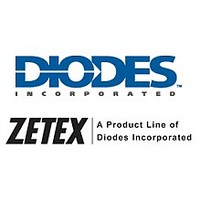ZXLD1370EST16TC Diodes Zetex, ZXLD1370EST16TC Datasheet - Page 20

ZXLD1370EST16TC
Manufacturer Part Number
ZXLD1370EST16TC
Description
IC LED DRVR HIGH BRIGHT TSSOP-16
Manufacturer
Diodes Zetex
Type
HBLED Driverr
Datasheet
1.ZXLD1370EST16TC.pdf
(36 pages)
Specifications of ZXLD1370EST16TC
Constant Current
*
Constant Voltage
*
Topology
*
Number Of Outputs
*
Internal Driver
*
Type - Primary
*
Type - Secondary
*
Frequency
*
Voltage - Supply
*
Voltage - Output
*
Mounting Type
Surface Mount
Package / Case
16-TSSOP Exposed Pad, 16-eTSSOP, 16-HTSSOP
Operating Temperature
*
Current - Output / Channel
*
Internal Switch(s)
No
Efficiency
95%
Lead Free Status / RoHS Status
Lead free / RoHS Compliant
Other names
ZXLD1370EST16TCTR
Available stocks
Company
Part Number
Manufacturer
Quantity
Price
Company:
Part Number:
ZXLD1370EST16TC
Manufacturer:
MICROCHIP
Quantity:
2 000
ZXLD1370
Document number: DS32165 Rev. 4 - 2
Applications Information
Boost / Buck-boost mode
The resistive power dissipation of the MOSFET is:
Switching power losses
Calculating the switching MOSFET's switching loss depends on many factors that influence both turn-on and turn-off. Using
a first order rough approximation, the switching power dissipation of the MOSFET is:
Matching the MOSFET with the controller is primarily based on the rise and fall time of the gate voltage. The best rise/fall
time in the application is based on many requirements, such as EMI (conducted and radiated), switching losses, lead/circuit
inductance, switching frequency, etc. How fast a MOSFET can be turned on and off is related to how fast the gate
capacitance of the MOSFET can be charged and discharged. The relationship between C (and the relative total gate
charge Qg), turn-on/turn-off time and the MOSFET driver current rating can be written as:
Here the constant current source” I ” usually is approximated with the peak drive current at a given driver input voltage.
Example 1)
Using the DMN6068 MOSFET (V
ZXLD1370 I
Assuming that cumulatively the rise time and fall time can account for a maximum of 10% of the period, the maximum
frequency allowed in this condition is:
This frequency is well above the max frequency the device can handle, therefore the DNM6068 can be used with the
ZXLD1370 in the whole spectrum of frequencies recommended for the device (from 300kHz to 1MHz).
Example 2)
ZXLD1370 I
Using the ZXMN6A09K (V
Q
Q
G
G
t
I
dt
dt
P
P
PERIOD
MOSFET
where
dt = turn-on/turn-off time
dV = gate voltage
C = gate capacitance = Qg/V
I = drive current – constant current source (for the given voltage value)
= 10.3nC at V
= 29nC at V
where
C
f
I
dt
resistive
switching
SW
GATE
RSS
=
=
=
PEAK
PEAK
is the switching frequency,
I
I
dV
PEAK
PEAK
is the MOSFET's reverse-transfer capacitance (a data sheet parameter),
is the MOSFET gate-driver's sink/source current at the MOSFET's turn-on threshold.
Q
Q
= 20*dt
I
⋅
= I
= 300mA
g
g
C
−
=
RMS
=
I
GATE
MOSFET
=
GS
=
=
C
Qg
RSS
GS
10
300
300
I
= 10V
29
=
= 300mA
3 .
= 10V
DS(MAX)
nC
mA
mA
1
nC
−
x
D
−
D
V
RMS
=
=
x
2
DS(MAX)
I
35
97
IN
GATE
I
f = 1/ t
= 60V, I
LED
(Continued)
ns
ns
2
x
x
f
sw
R
= 60V, I
PERIOD
DS
D(MAX)
I x
−
LOAD
ON
= 1.43MHz
D(MAX)
= 12.2A):
www.diodes.com
= 8.5A):
20 of 36
Diodes Incorporated
A Product Line of
© Diodes Incorporated
ZXLD1370
March 2011



















